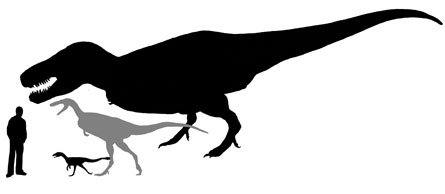A newly described species of tyrannosaur is small enough to look humans in the eye. Fossils of the new tyrannosaur, Xiongguanlong baimoensis, help fill in details about the evolution of the fearsome meat-eating dinosaurs. Xiongguanlong lived in what is now western China between 110 million and 120 million years ago, says Peter Makovicky, a paleontologist at The Field Museum in Chicago. That era lies well within a 40-million-year–long gap in the tyrannosaur fossil record, he and his colleagues note online April 21 in Proceedings of the Royal Society B.

Remains of the creature suggest that Xiongguanlong weighed about 270 kilograms and stood about 2 meters tall at the hips. So, the meat-eating biped also fills the size gap that accompanies the time gap in the fossil record, falling between small ancestors such as Guanlong wucaii — a lithe, half-meter–high creature that lived about 160 million years ago — and multiton behemoths such as Tyrannosaurus rex, which stood about 4 meters tall at the hips and lived between 68 million and 65 million years ago.
The new remains “come from the business end of the animal, where many interesting aspects of tyrannosaur evolution occurred,” Makovicky says. For instance, the fossils suggest Xiongguanlong had a long narrow snout with flesh-nipping teeth at the front of its jaws, whereas later tyrannosaurs, including T. rex, had short-snouted skulls well-suited for crushing bones.






